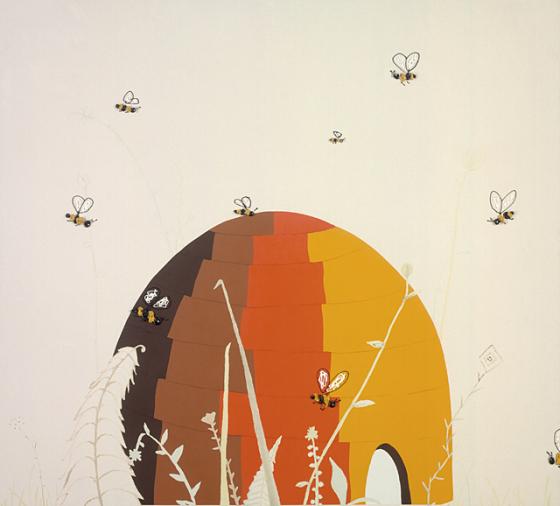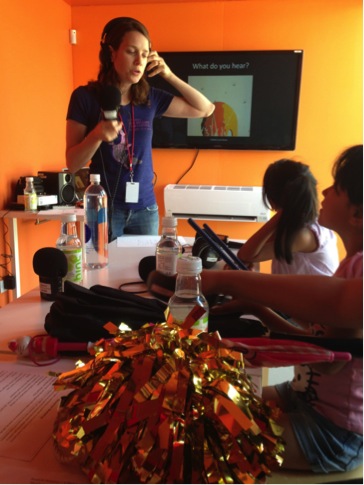How is sound related to vision?
Last month, LACMA premiered a new workshop at the roaming Art+Film Lab that asked participants to do something radical. Montebello residents spent time looking and listening to a two-dimensional work of art from LACMA’s collection, making sense of the painting not just through sight, but using their ears as well. In just 45 short minutes, groups worked together to create spontaneous soundscapes that activated the paintings in new and extraordinary ways.
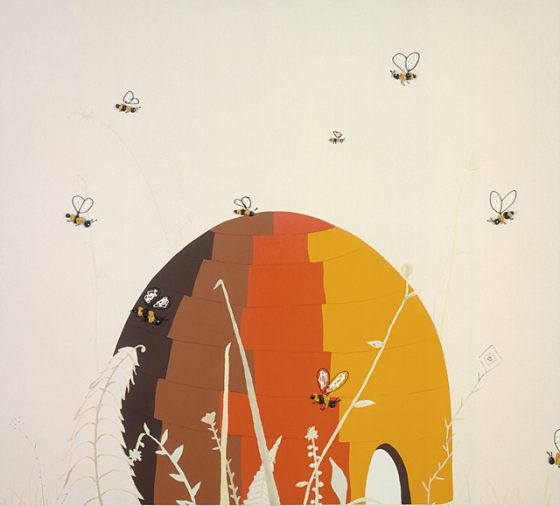 Laura Owens, Untitled, 1998, purchased with funds provided by the Marvin B. Meyer Family Endowment in memory of Nan Uhlmann Meyer, © Laura Owens
Laura Owens, Untitled, 1998, purchased with funds provided by the Marvin B. Meyer Family Endowment in memory of Nan Uhlmann Meyer, © Laura Owens
We transformed into sound designers for the class. To warm up, we looked at Laura’s Owen’s Untitled from 1998. The painting features a large, jewel-toned beehive swarming with insects at work. Participants were asked to pretend to step into the painting to take a look around them. Their imaginations ignited. We asked them to think about a few questions.
What kinds of sounds do you hear?
What is around you that you can’t see in the painting? Is it also making a noise?
How far away is the noise from you?
Immediate reactions were sweet. The younger ones used their teeth to create soft buzzing noises and pom-poms to mimic the sound of the grass swaying in the wind. Seconds later, screams rang out as some realized they were not wearing a protective bee suit, while others remained calm and flicked the table with their fingers to create the sound of the bees running into the hive, missing the entrance altogether.
Each group was asked to choose an artwork from LACMA’s collection for their soundscape. Some spent their time looking closely, examining every part of the artwork and scheming interesting narratives, while others huddled around the table covered with instruments and sound objects (rope, beads, empty boxes, pom poms, etc.) brainstorming sounds and how to best recreate them.
Groups reconvened in the lab and presented their soundscapes with explanations about the setting and the objects used to make the sounds. During one performance, a grandmother instructed her grandchildren to close their eyes and take in the sounds they developed together. “Does the painting move in your head now?” she asked. They nodded their heads.
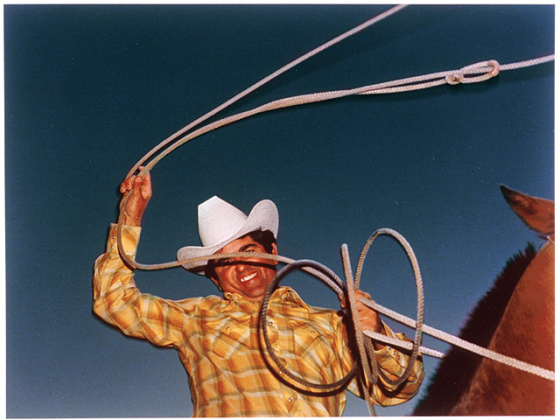 Susan Felter, Jeff Barmby, Vallejo, 1978, printed 1983, gift of Sue and Albert Dorskind
Susan Felter, Jeff Barmby, Vallejo, 1978, printed 1983, gift of Sue and Albert Dorskind
When designing this workshop for LACMA9, we wanted to explore a kind of conceptual resonance between image and sound, to echo the work pioneered by audio collectors and designers like Michel Chion, and to try to put ourselves in the shoes of artists like Wassily Kandinsky who lived and painted with synesthesia, the neurological phenomenon that confuses and intertwines the body’s core senses. During the Sound Art workshop, we experiment with play while experiencing the artworks we feel connected to in a way that celebrates our imaginations and ability to work as a team.
Have you ever imagined what a painting might sound like?
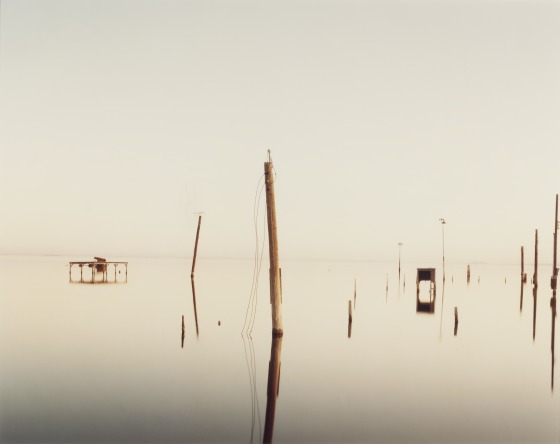 Richard Misrach, T.V. Antenna, Salton Sea, California, 1985, printed 1996, Ralph M. Parsons Fund, © Richard Misrach
Richard Misrach, T.V. Antenna, Salton Sea, California, 1985, printed 1996, Ralph M. Parsons Fund, © Richard Misrach
Give it try here. If you were inside of the photograph above, what would you hear? What kinds of noises and sounds would you include in a soundscape for this image?
What about the image inspires sound? Submit your responses in the comments!
Sound Art may be coming to your town. Check the links below for dates in Inglewood and Torrance.
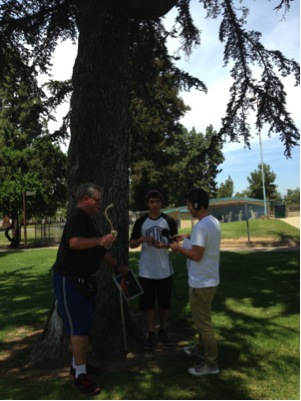 Temperatures were over 100 degrees that day, so groups huddled under trees and tents to rehearse and record their soundscape. Educator: Fernando Cervantes
Temperatures were over 100 degrees that day, so groups huddled under trees and tents to rehearse and record their soundscape. Educator: Fernando Cervantes
Listen to the soundscape this group created for Jeff Barmby’s Vallejo.
Angela Hall, Education Coordinator



